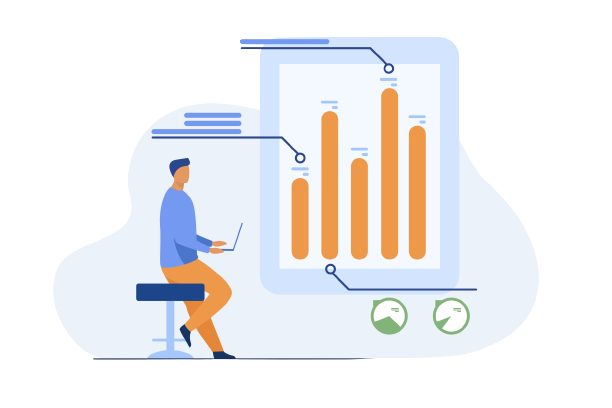

In this blog, we’ll explore the essentials of customer analytics and how you can harness its power to elevate your business.


Imagine having a crystal ball that tells you exactly what your customers want. Sounds like magic? It’s actually customer experience analytics! By leveraging customer data, businesses can make informed decisions that drive growth and satisfaction. In this blog, we’ll explore the essentials of customer experience analytics and how you can harness its power to elevate your business. By the end, you’ll be equipped with actionable insights and strategies to start making data-driven decisions.
Customer experience analytics is the process of collecting and analyzing customer data to understand their behavior and preferences. It’s like having a backstage pass to your customers’ minds! By delving into this data, businesses can improve customer satisfaction, boost sales, and create more effective marketing strategies.
Customer analytics plays a crucial role in the growth and success of a business, as it helps precisely understand consumers’ preferences, behaviors, and need. Some key reasons why customer analytics is important
Targeted Marketing: Customer analytics helps companies identify the most profitable customer segments and tailor their marketing efforts accordingly. This ensures that marketing messages and offers are relevant to the target audience, increasing the likelihood of engagement and conversion.
Reduced Campaign Costs: By targeting the most receptive customers, companies can reduce the overall cost of their marketing campaigns. This is achieved by avoiding wasteful spending on uninterested or unresponsive customers.
Predictive Customer Churn: Customer analytics can predict which customers are most likely to churn, allowing companies to develop proactive retention strategies. This includes identifying the root causes of churn and addressing them before it happens.
Personalized Interactions: Customer analytics provides insights into individual customer preferences and behaviors, enabling companies to deliver personalized interactions. This can include tailored product recommendations, personalized offers, and customized service experiences.
Holistic View of Customer Journey: Customer analytics offers a comprehensive view of the customer journey, from initial contact to post-purchase interactions. This helps companies identify pain points and areas for improvement, leading to enhanced customer satisfaction and loyalty.
Customer Feedback Analysis: Analyzing customer feedback and sentiment helps companies understand what customers like and dislike about their products or services. This information can be used to improve product offerings and customer service.
Optimized Product Development: By understanding customer buying patterns and preferences, companies can develop products that meet these needs more effectively. This leads to increased sales and revenue.
Improved Customer Retention: Customer analytics helps companies identify the factors that contribute to customer retention. By addressing these factors, companies can reduce churn and increase the lifetime value of their customers.
Increased Sales: By targeting the most profitable customer segments and offering them the right products and services, companies can increase their sales and revenue.
To effectively use customer analytics, you need to understand its core components. This involves gathering data from various sources such as:
Surveys: Direct feedback from customers about their experiences and preferences.
Website Analytics: Data on how customers interact with your website, including page views, time spent on pages, and navigation paths.
Purchase History: Information on what customers have bought, how often they buy, and their average order value.
Social Media: Insights from social media platforms about customer sentiment and engagement.
Customer Service Interactions: Data from customer service interactions can reveal common issues and areas for improvement.
Now that we’ve established the importance and impact of customer experience automation let’s explore five actionable strategies that businesses can use to leverage automation and drive growth.
Acquiring new customers is a fundamental goal for any business. These metrics help you understand the effectiveness of your acquisition efforts.
Engaging your customers keeps them coming back. These metrics measure how well you’re capturing and maintaining customer interest.
Satisfied customers are more likely to become loyal advocates. These metrics help you gauge customer happiness and loyalty.
Keeping existing customers is often more cost-effective than acquiring new ones. These metrics focus on retaining your customer base.
Analyzing customer behavior provides insights into how customers interact with your brand.
Providing excellent customer support is essential for maintaining customer satisfaction. These metrics measure the efficiency and effectiveness of your support team.
Effective marketing drives customer acquisition and engagement. These metrics measure the impact of your marketing efforts.
Understanding how customers use your products helps identify opportunities for improvement and growth.
Implementing customer experience analytics can seem daunting, but it’s straightforward if you follow these steps:
Tracking the right metrics is essential for understanding your customers and making informed business decisions. By focusing on these key customer analytics metrics, you can gain valuable insights, optimize your strategies, and drive growth.
Don’t forget to share this post




Don’t Let Your Competitors Understand Your Customers Better Than You
Don’t miss out. Try our 30-day Free Professional Trial.

